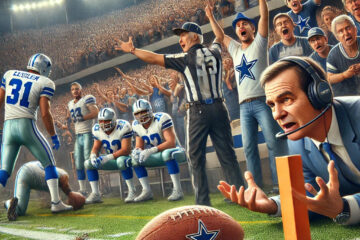The Future of Virtual Reality in the NFL
Virtual reality (VR) is revolutionizing various industries, and the National Football League (NFL) is no exception. As technology continues to advance, teams are exploring innovative methods to train their players and simulate real-game scenarios. This article delves into the world of virtual reality in the NFL, uncovering its benefits, current applications, and future possibilities.
Virtual reality is an immersive technology that creates a simulated environment, allowing users to interact with a computer-generated world. In recent years, the NFL has embraced VR as a powerful tool for player training and development. With its ability to provide lifelike experiences, VR is transforming the way athletes prepare for games and hone their skills.
Benefits of Virtual Reality in NFL Training
Enhanced player visualization and immersion
One of the primary advantages of VR in NFL training is its ability to enhance player visualization and immersion. Through VR headsets and motion tracking technology, players can experience realistic game scenarios from a first-person perspective. This level of immersion enables athletes to analyze their surroundings, anticipate opponents’ movements, and make split-second decisions.
Realistic simulation of game situations
VR offers a safe and controlled environment for simulating game situations. Quarterbacks can practice reading defenses and making accurate throws, while wide receivers can improve their route-running and catching skills. Defensive players can enhance their reaction time and learn to make crucial plays. By replicating real-game scenarios, VR provides players with valuable repetitions and mental repetitions without the physical toll.
Improved decision-making and reaction time
In high-pressure situations, split-second decisions and quick reactions can make all the difference. VR training helps players develop their decision-making abilities and reaction times through immersive experiences that closely resemble actual game scenarios. This technology exposes athletes to various situations, enabling them to recognize patterns, anticipate movements, and make informed choices, ultimately leading to improved on-field performance.
The Future of Virtual Reality in the NFL
The future of virtual reality in the NFL looks promising. As technology continues to evolve, we can expect increased adoption and advancements in VR applications. Here are a few predictions for how VR will shape the future of the league.
Predictions for increased adoption
As more success stories emerge and the benefits of VR training become evident, we can expect an increased number of NFL teams to adopt virtual reality into their training programs. The competitive nature of the league drives teams to embrace innovative methods that can give them an edge over their rivals. VR’s ability to enhance decision-making, reaction time, and skill development makes it an attractive option for teams looking to optimize player performance.
Potential impact on player performance
The integration of VR into NFL training programs has the potential to revolutionize player performance. By providing a more immersive and realistic training experience, VR can accelerate skill acquisition, enhance mental preparedness, and improve overall on-field performance. Players who embrace VR training techniques may gain a competitive advantage, leading to more dynamic and engaging games.
Evolution of VR technology in the league
As VR technology advances, we can anticipate significant developments specific to the NFL’s needs. VR headsets may become more streamlined, lightweight, and comfortable, allowing for extended training sessions. Enhanced haptic feedback systems could provide players with a more realistic sense of physical contact and feedback. Furthermore, VR software and simulations may become increasingly sophisticated, replicating game scenarios with stunning accuracy and realism.
Summary
Virtual reality is transforming NFL training, offering enhanced player visualization, realistic simulation of game situations, and improved decision-making and reaction time. As more NFL teams embrace this technology, the league is witnessing significant advancements in player development. Despite challenges and limitations, virtual reality has the potential to reshape the NFL’s future, revolutionizing fan engagement, coaching strategies, and injury prevention. With continued innovation and adaptation, virtual reality is poised to play a vital role in optimizing player performance and creating unforgettable game experiences.
FAQs
FAQ 1: How does virtual reality training benefit NFL players?
Virtual reality training benefits NFL players by enhancing their visualization and immersion, simulating realistic game situations, and improving their decision-making and reaction time. It provides a safe and controlled environment for players to practice and develop their skills.
FAQ 2: Which NFL teams have implemented virtual reality?
Several NFL teams have implemented virtual reality in their training programs, including:
- The New York Jets are using VR to help their quarterbacks learn new plays. The Jets have created a VR simulator that allows quarterbacks to see the field from different angles and practice making different throws.
- The Minnesota Vikings are using VR to help their defensive players learn how to defend different offensive schemes. The Vikings have created a VR simulator that allows defensive players to see different plays from the perspective of the quarterback and the offensive players.
- The Arizona Cardinals are using VR to help their players improve their decision-making skills. The Cardinals have created a VR simulator that allows players to simulate game situations and make decisions under pressure.
FAQ 3: Are there any limitations to virtual reality training in the NFL?
Yes, virtual reality training in the NFL has limitations. High costs, technical requirements, limited physical feedback, and ethical considerations regarding player safety are some of the challenges that need to be addressed.
FAQ 4: What is the future outlook for virtual reality in the NFL?
The future outlook for virtual reality in the NFL is promising. Increased adoption, potential impact on player performance, and the evolution of VR technology specific to the league’s needs are expected to shape the future of virtual reality in the NFL.
FAQ 5: How does virtual reality affect fan engagement?
Virtual reality has the potential to revolutionize fan engagement in the NFL. By providing immersive and interactive experiences, VR can transport fans into the stadium, offering a unique perspective and enhancing the overall game experience.







